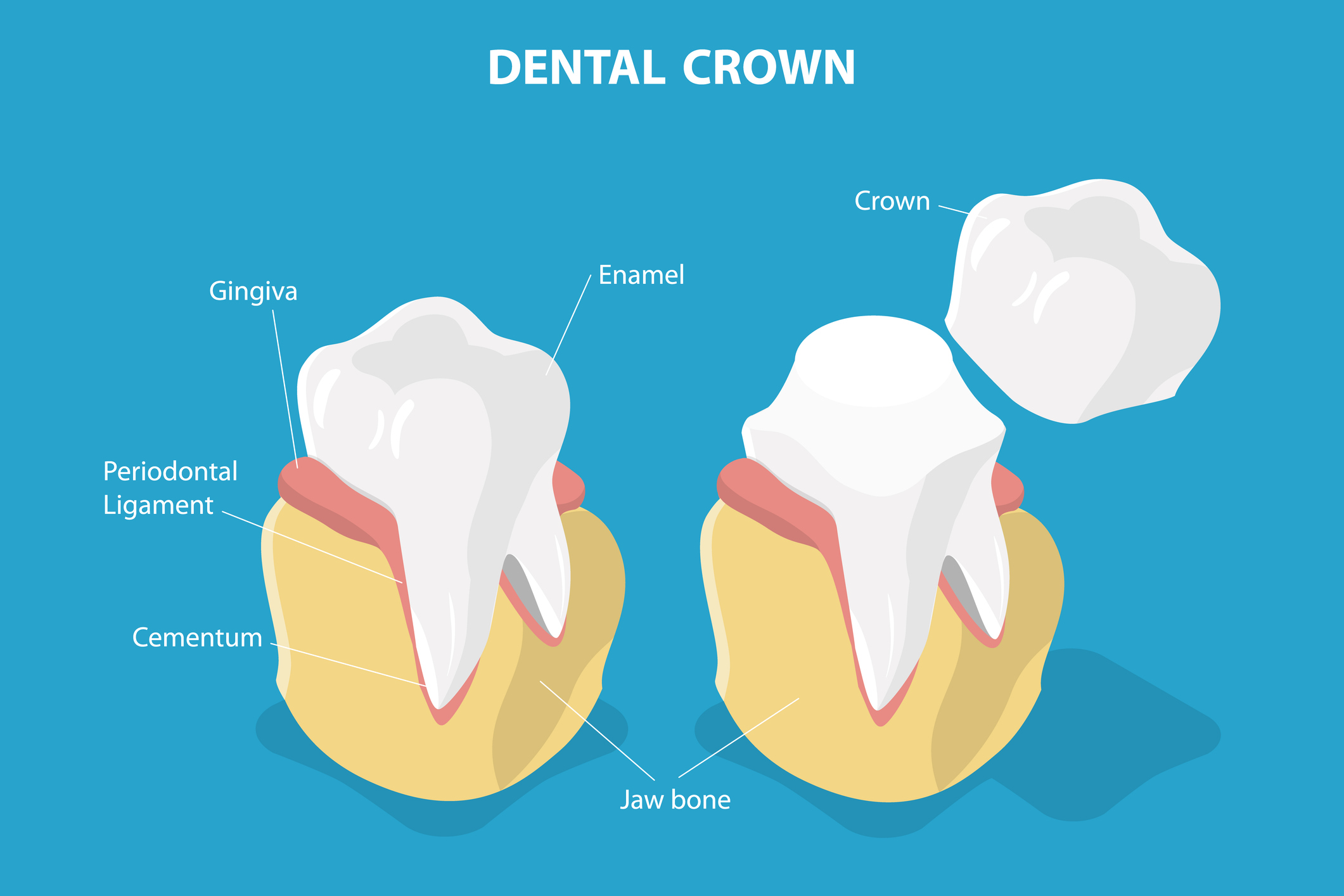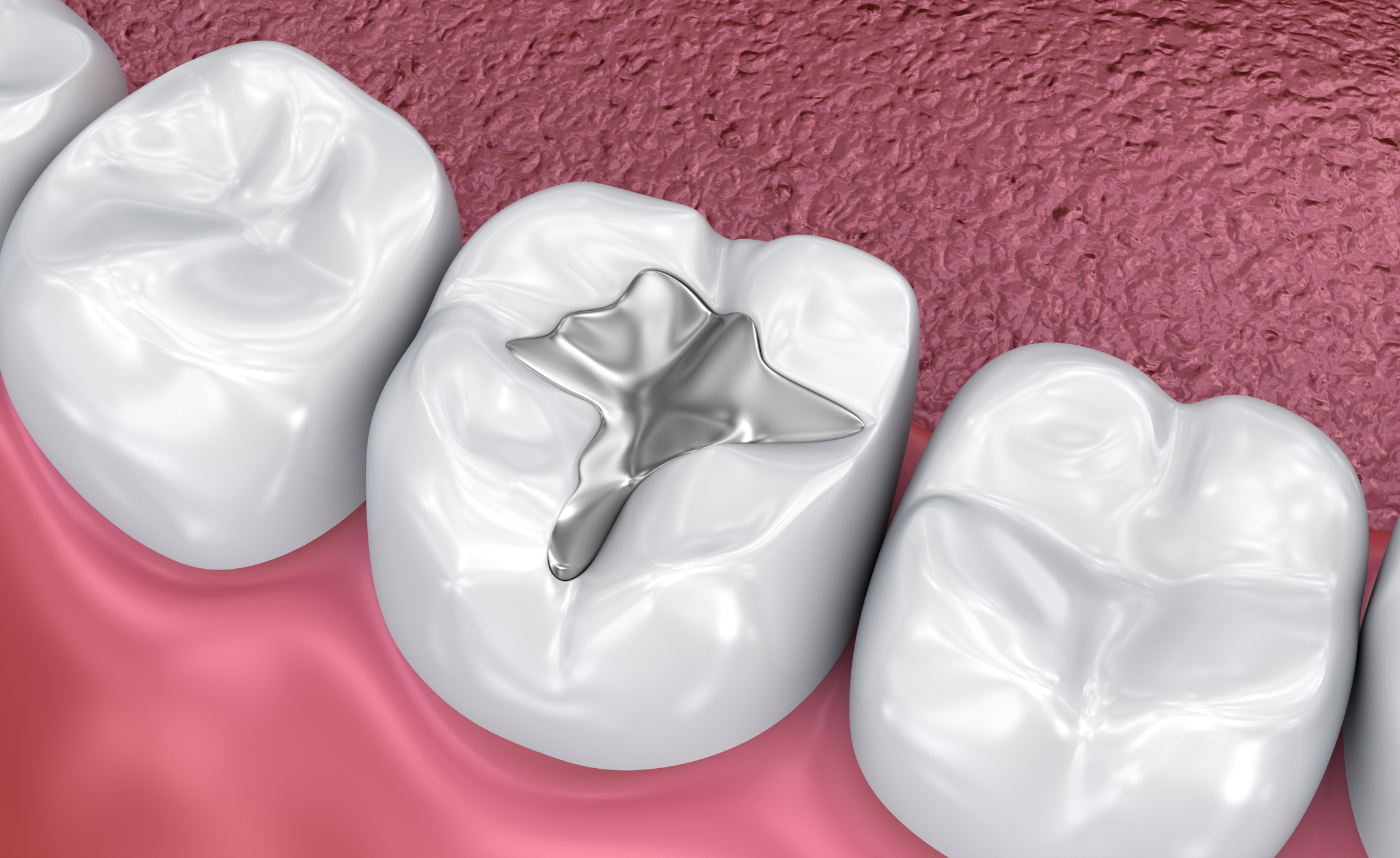Filling vs Crown: What’s the Difference?
If you’re having a problem with one of your teeth, you’re probably wondering if you need a tooth filling or a crown. There are many kinds of restorative dental options out there, and it can be tricky to determine which type is right for you.
Crowns and fillings both stop tooth decay. However, fillings are used for teeth that have minimal damage, while crowns are used for more extensive tooth decay. A crown fits on top of a damaged tooth, while a filling sits inside the tooth itself.
Let’s explore the details of these two different treatments and which one might be right for you.
Understanding Dental Crowns

What Are Crowns?
A crown is a prosthetic (or fake) tooth, usually made out of ceramic or porcelain, that is placed on top of your existing tooth. A crown is placed on a tooth that is significantly damaged to prevent further decay. Crowns look like real teeth, and they can make speaking and chewing significantly easier.
When Do I Need a Crown?
You may need a crown if your tooth is too damaged or decayed for a filling to be effective. Crowns are often used after root canal therapy, when a large portion of the tooth structure has been removed, or when a tooth is cracked or severely worn down. If your tooth is weak but still intact enough to support a crown, your dentist will likely recommend this treatment to restore both function and appearance.
Common signs that you might need a crown include:
- A large, old filling that is breaking down
- A cracked or fractured tooth
- Severe tooth discoloration or misshapenness
- Needing to protect a tooth that’s undergone root canal treatment
Crowns not only strengthen the remaining structure but also improve your bite and restore your smile. If left untreated, a severely damaged tooth can lead to further issues like infection, pain, or even tooth loss.
How Much Tooth is Needed for a Crown?
Crowns are designed to be used on teeth with extensive damage, but in some cases, the amount of tooth damage may be too extensive. For a crown to work properly, there needs to be at least ¼ of the tooth remaining that hasn’t been affected by decay.
If there is not enough tooth material left to provide support, your dentist may suggest using composite resin. Composite resin is a material that can be applied in thin layers to build up the remaining tooth structure. Once these layers harden, the dentist can place a crown as normal.
Understanding Fillings

What Are Fillings?
Fillings are made out of dental materials such as silver, porcelain, or composite resin. They are inserted into small holes that form in your teeth due to decay. Properly installed fillings can last many years and will stop decay from eating away at your teeth.
When Do I Need a Filling?
Fillings are a great solution for treating small cavities or areas of minor tooth decay. If your dentist identifies a localized area of decay that hasn’t affected the tooth’s overall structure, a filling is typically the first line of defense. The earlier a cavity is caught, the more likely it can be repaired with a simple filling.
You might need a filling if you notice:
- Tooth sensitivity to hot, cold, or sweet foods
- A small hole or dark spot on your tooth
- Mild toothaches, especially when chewing
- Rough edges on a tooth that wasn’t there before
Getting a filling will prevent the problem from spreading deeper into the tooth. This helps you avoid more extensive (and expensive) procedures like crowns or root canals down the road.
What’s the Difference Between a Crown and a Filling?
Fillings are used for teeth that have minimal damage, while crowns are used for more extensive tooth decay. A crown fits on top of a damaged tooth, while a filling sits inside the tooth itself.
When you get a crown, the dentist simply places the prosthetic over your natural tooth. For a filling, the dentist scrapes away the decayed area with a special tool before filling in the hole.
If you suspect you have tooth decay, it’s important to see your dentist as soon as possible to prevent things from getting worse. After a certain point, damage and decay can start to affect the integrity of your tooth, making more intensive procedures necessary. At your appointment, your dentist will examine your tooth and determine whether a crown or filling is the better option.
Schedule a Free Dental Crown Consultation
If you’re looking to learn more about dental crowns or fillings, reach out to the experienced team at Art of Modern Dentistry. Our dentists are prepared to make your visit as easy and comfortable as possible. We’re the most trusted choice for dental crowns in Chicago!
Schedule an appointment at one of our Chicago offices today!




